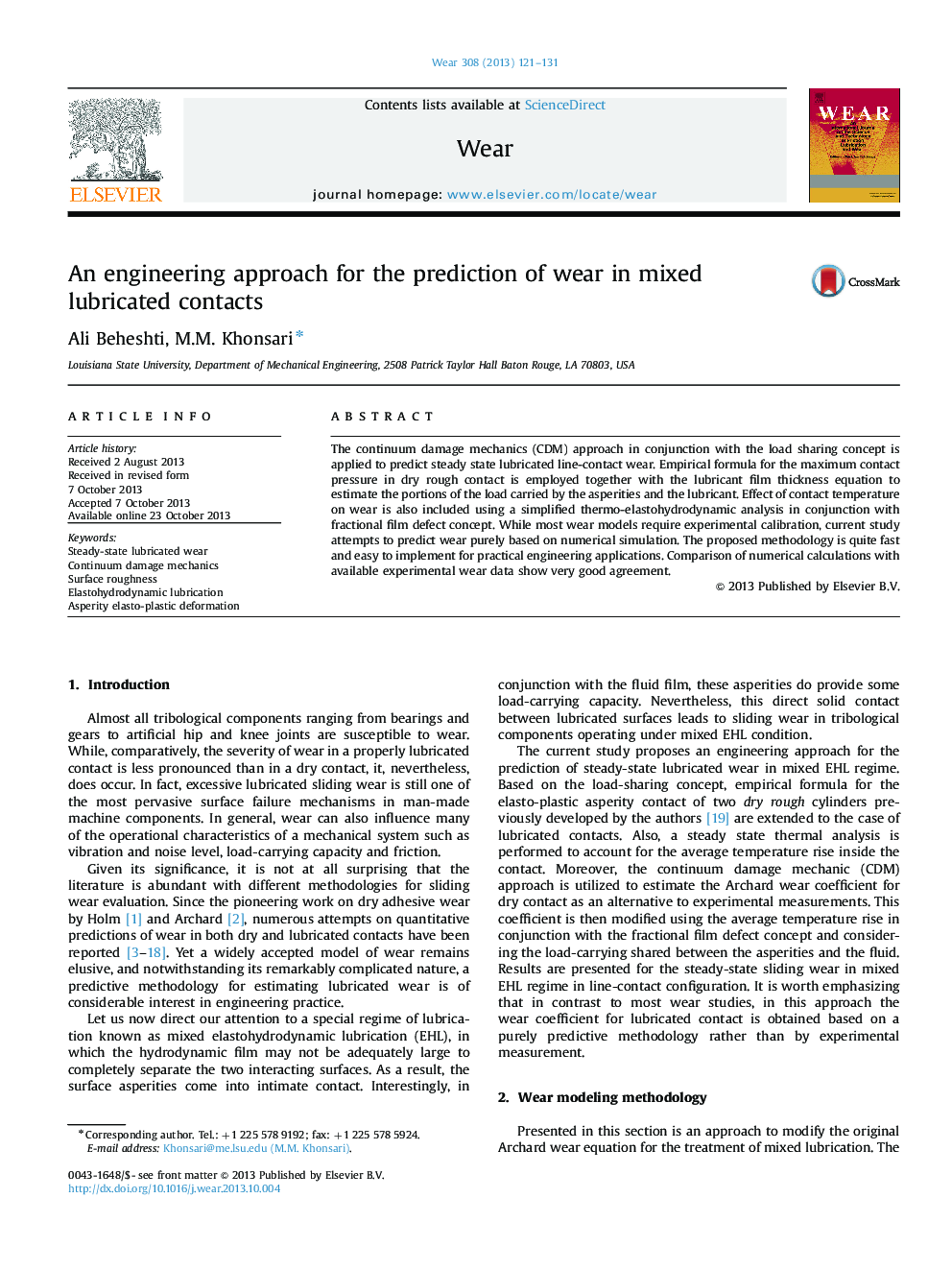| Article ID | Journal | Published Year | Pages | File Type |
|---|---|---|---|---|
| 617437 | Wear | 2013 | 11 Pages |
Abstract
The continuum damage mechanics (CDM) approach in conjunction with the load sharing concept is applied to predict steady state lubricated line-contact wear. Empirical formula for the maximum contact pressure in dry rough contact is employed together with the lubricant film thickness equation to estimate the portions of the load carried by the asperities and the lubricant. Effect of contact temperature on wear is also included using a simplified thermo-elastohydrodynamic analysis in conjunction with fractional film defect concept. While most wear models require experimental calibration, current study attempts to predict wear purely based on numerical simulation. The proposed methodology is quite fast and easy to implement for practical engineering applications. Comparison of numerical calculations with available experimental wear data show very good agreement.
Related Topics
Physical Sciences and Engineering
Chemical Engineering
Colloid and Surface Chemistry
Authors
Ali Beheshti, M.M. Khonsari,
